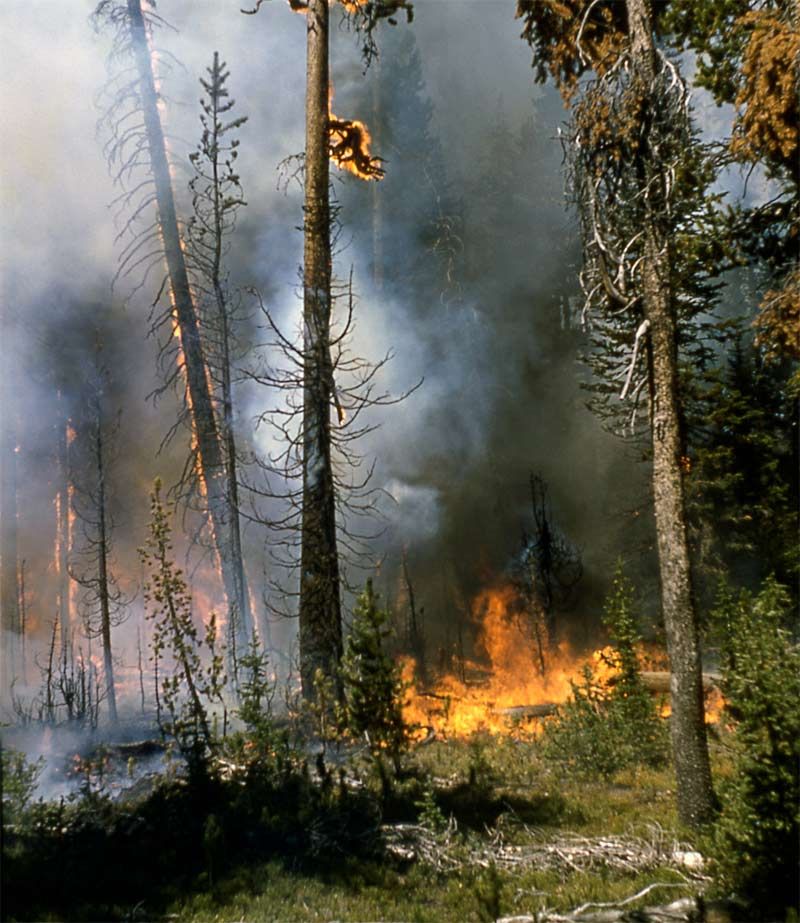
Warmer Climate Could Spark More Severe Yellowstone Fires

Large fires in Yellowstone National Park could dramatically increase by mid-century due to climate change, which could create a very different park than the one people know today, a new study suggests.
An increase in the number of severe fires in and around Yellowstone National Park would not destroy the popular park, the study authors say, but it could reduce the park's conifer-dominated mature forests (pines and firs) to younger stands and more open vegetation.
"Large, severe fires are normal for this ecosystem. It has burned this way about every few hundred years for thousands of years," said study author and ecologist Monica Turner of the University of Wisconsin-Madison. "But if the current relationship between climate and large fires holds true, a warming climate will drive more frequent large fires in the Greater Yellowstone Ecosystem in the future." [Related: Top 10 Most Visited National Parks ]
Fire frequency
Wildfires in this ecosystem are climate-driven and are primed by hotter, drier conditions, such as those predicted by numerous global climate models.
Already, fire ecologists have noticed increased fire frequency in the West, associated with temperature increases of less than 2 degrees Fahrenheit (1.1 degrees Celsius) and early spring snowmelt in the mountains.
For the new study, the researchers analyzed large wildfires (those greater than 500 acres) and climate data in the northern Rocky Mountains from 1972 to 1999 — a period that includes the massive 1988 wildfire that burned some 793,880 acres, the largest wildfire in the recorded history of the park — then used these observed relationships with global climate models to project how expected climate change will affect fires during the 21st century.
Sign up for the Live Science daily newsletter now
Get the world’s most fascinating discoveries delivered straight to your inbox.
"What surprised us about our results was the speed and scale of the projected changes in fire in Greater Yellowstone," said study team member Anthony Westerling of the University of California, Merced. "We expected fire to increase with increased temperatures, but we did not expect it to increase so much or so quickly. We were also surprised by how consistent the changes were across different climate projections."
They found that fires larger than 500 acres will likely be an annual occurrence by 2050, with fire rotation — the time span over which the entire landscape burns — reduced from a historic range of 100 to 300 years to less than 30 years. Interestingly, the predicted new fire regime closely resembles patterns typical of other landscapes, such as the ponderosa pine forests of the Southwest.
"More frequent fires will not be catastrophic to the area — Yellowstone will not be destroyed — but they will undoubtedly lead to major shifts in the vegetation," says Turner. "It is critical to keep monitoring these forests and study how they respond to future fires."
For example, the iconic lodgepole pines that dominate much of the current landscape may not have time to recover between big fires, especially if hot, dry summers make it difficult for tree seedlings to germinate and grow following future fires. Some forests could shift toward fast-growing aspen and Douglas fir, or even shrubs and grassland. Such changes would also affect the region's wildlife, hydrology, carbon storage and aesthetics.
Climate and fire
Westerling, an expert on climate-fire interactions, cautions that the models used in the study will not work once the increase in fires creates a fundamental change in the ecosystem. As the landscape changes, the relationships between climate and fire will change as well.
For example, with more frequent fires, available fuels will also dwindle and eventually become more important than climate in limiting fires, so large fires could even become less severe in the future, making it an important topic for continued study.
"Our research after the immense 1988 fires revealed surprises and tremendous resilience in Yellowstone's ecosystems, and Yellowstone is likely to surprise us again in the future," Turner said. "It is an incredibly valuable natural laboratory for studying how natural ecosystems adapt to changing environmental conditions."
The study was published online in the July 25 edition of the journal Proceedings of the National Academy of Sciences.












